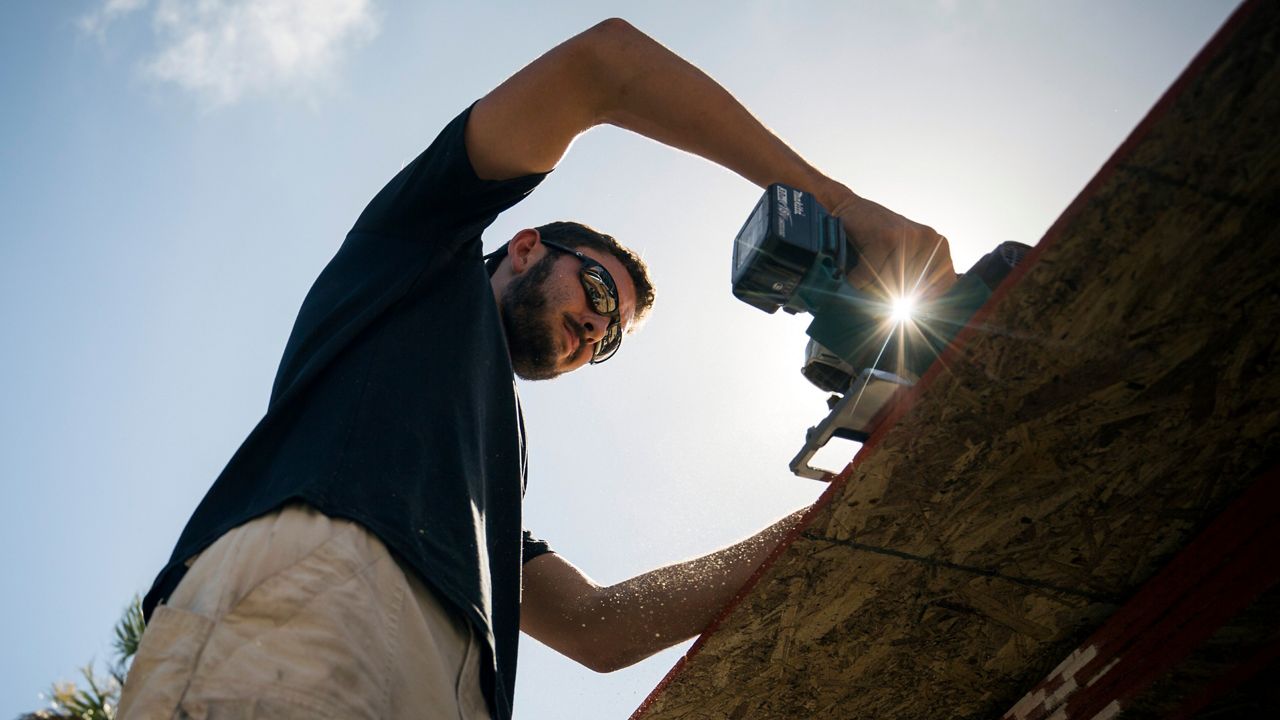You just received news that a tropical storm is brewing at sea and could arrive, as a hurricane, in a few days.
Your home sports no shutters, so you ponder what to use — quickly — to cover your windows.
What You Need To Know
- The threat of projectile damage prompts the need to cover windows before a hurricane
- Board up with something strong, such as plywood, rigid plastic or polycarbonate
- Officials suggest you don't bother taping windows, because that doesn't work
Emergency-management officials advise that you be reasonable with yourself.
“The purpose of covering windows during a storm is to minimize the threat of projectile damage,” said David Connor, a public information officer for Pinellas County, “That is, storm-force winds picking up something — a piece of debris, a piece of the trees and construction debris and it flying through the air and impacting your house.
“And if you think about it that way, then it really it kind of makes clear sense,” he said.
But this is no time for tape or tarp.
This is time for hard-core covering — plywood or maybe thick, rigid plastic.
If you decide on plywood, you might not want to wait, because hardware store managers cite shortages and rising prices.
Regardless, make sure to cover those windows with something sturdy.
“Putting a tarp over your windows or putting tape on your windows are not going to protect your windows if they get hit by something,” Connor said.
Some retailers suggest polycarbonate hurricane panels, which they market as stronger, less conspicuous and easier to handle and install than plywood. They’ll also let in sunlight if you lose power.
Some emergency-management officials, including those in Pinellas County, point to options such as permanent metal mesh screens or flexible woven polypropylene netting.
Yet public officials and hardware store managers emphasized plywood if you’re in a storm-driven pinch.
Pinellas County recommends 5/8-inch thickness. A YouTube video demonstrates why: A two-by-four traveling at 34 miles per hour plows right through a 1/2-inch-thick piece of oriented strand board — cheaper than plywood — but bounces off a 5/8-inch-thick piece of plywood.
“It’s almost like a ‘Three Little Pigs’ kind of situation — they did the hay, then the sticks and then the bricks,” said Andrew Sullivan, public information coordinator for Osceola County Fire Rescue and EMS. “And you really can get what you pay for out of it.”
You won’t get much out of tape. Hillsborough County calls the benefits of taping up windows a myth and tells residents not to bother.
“If anything, tape holds together large chunks of glass that are more dangerous than small shards,” the county says in its 2021 Disaster Preparedness Guide. “Forget tape. Install shutters, plywood, or impact-resistant windows.”
For do-it-yourself storm shutters, Lake County recommends galvanized steel, aluminum or, at a lower cost, plywood.
“Unfortunately, too often residents are purchasing and assembling storm shutters only days before a hurricane is approaching,” Lake County says in its online hurricane guide. “Constructing shutters should occur long before the storm.”
Those who seek plywood could be in for a challenge.
Construction and home improvements have led to increased demand and higher prices for certain woods, including plywood, Spectrum News reported in early May. At the same time, worker shortages have caused a drop in production.
Matt Eriksen, manager at Vision Ace Hardware in Tarpon Springs, said he has heard about shortages of plywood, plastics and foam insulation.
“I wouldn’t say it’s a shortage panic, but it definitely caused the price to go up,” he told Spectrum News.
As for the plywood shortage and cost increase, said Don Petrie, manager of Treasure Island True Value hardware store: “I hope it doesn’t create too much of a problem when hurricane season comes.”



